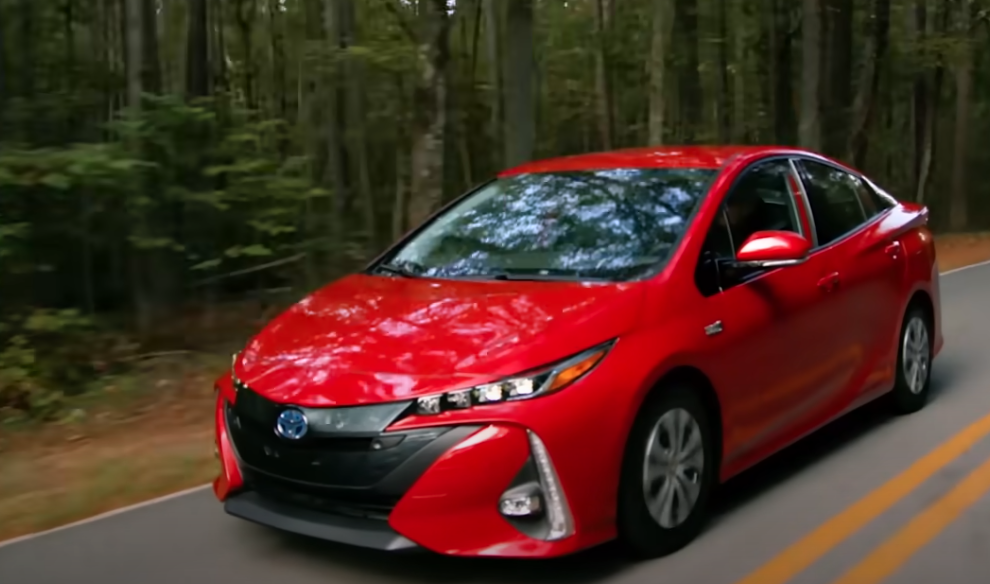
Hybrid versus electric car, which one is really better to buy? That’s what we’re going to find out. Welcome to Carb Corner where we help you the consumer master the process of car buying and car ownership. If you are deciding whether your next car should be a hybrid, plug-in hybrid, or a fully electric car, then this video is for you. What are the major pros and cons of each? How much money can they really save you? And which one makes the most sense to buy? Well before getting into it, remember if you enjoy and get value out of this video, make sure to subscribe and turn on notifications. And a huge thanks to the electrical safety authority for sponsoring a portion of this video with a very important safety message that anyone considering a plug-in absolutely needs to know.
But first, let’s start with the major pros and cons of hybrid vehicles. Now for those who don’t know, hybrids have a large battery and electric motors that assist a gas engine to improve fuel economy. The first major benefit that they have over EVs is that they don’t need to be charged, making them more suitable for those who don’t have a place to charge or long distance drivers where range anxiety or access to reliable public chargers could be an issue with an EV. Hybrids, on the other hand, don’t have any compromises, they’re just as easy to own as a conventional gas vehicle. Although they still require gas, they can save anywhere from 20-50% in fuel costs over a conventional gas car, which is especially true during stop and go city driving where hybrids are typically the most efficient.
So if you were to spend around two thousand to twenty five hundred dollars a year on gas for a conventional gas car, the equivalent hybrid car would cost roughly twelve hundred to eighteen hundred dollars per year, which over the years is going to add up to a lot of savings. Hybrids also don’t require any additional maintenance and they consistently are rated for having among the lowest five-year and 10-year cost of ownership of any vehicle type which ties in with the next major benefit that they have, which is a proven track record for longevity and reliability. Compared to most EVs, which are relatively new to the market, hybrids have more than two decades of time-tested technology. Many of the most popular hybrids have proven to be very reliable over 10 plus years of ownership.
And even when they reach that age, major repairs like battery failure have proven to be extremely rare among the most popular hybrids. And because of that, hybrids tend to have very high owner satisfaction and very strong resale value. In fact, they tend to be among the very top categories of vehicles in these two areas. And that brings us to the last major benefit of hybrids, which is that they tend to be a lot less expensive to buy and have more budget-friendly options when compared to EVs. Although most hybrids are typically at least $2,000 to $3,000 more expensive than the equivalent gas car, they can be up to $10,000 to $20,000 cheaper than a comparable EV, which is a lot of money to save.
So hybrids definitely have a lot of benefits, but before making a decision, let’s see how they compare to electric vehicles. Now, if you are considering any kind of plug-in vehicle, you’re going to need a charger or access to charging, so here’s some really important safety tips that you need to know about installing an EV charger. Many consumers might not be aware that installing an EV charger that isn’t certified or improperly installed can be extremely dangerous. There are many different EV chargers that are available on the market, but not all of them are the same. What you should look for is whether the charger carries the official mark or label of a recognized certification or evaluation agency. you can find a full list of these labels on the electrical safety authority website.
Using a charger with these labels will give you peace of mind that the product is safe to use in Canada. And if the charger does not have any of these labels, just stay away. It’s not worth the potential safety risk. Just because it might look okay or have a great price doesn’t mean that it’s safe. And unfortunately, there are ev chargers with questionable safety being sold on the market, so check for these labels and only buy one that’s certified. Now picking a safe ev charger is one important step. The next important step is to make sure that it’s installed safely and correctly. It is important to understand that an ev charger requires a lot of power over long periods of time, and you need to make sure that the electrical panel in your home can handle the extra load.
If you have an older panel or a full panel, you might need a significant upgrade. In Ontario, if you’re hiring someone to do electrical work in your home, by law, it must be a licensed electrical contractor, otherwise known as an LEC, with an esa license. The licensed electrical contractor that’s doing the installation must also file a permit with esa before starting the installation. It is absolutely not worth the risk to do unlicensed work or work without a permit. We don’t recommend any DIY here. Damaging your home including your brand new vehicle is not worth the risk. So hire an LEC and get a permit from the ESA. So to sum up the safety tips, only buy an EV charger with the correct certification labels from the ESA website.
Hire a licensed electrical contractor to check your panel and do the installation. And make sure you get the correct permits from the ESA. For more information about EV chargers, LECs and other useful safety tips, just visit esasafe.com slash EV. More information can be found in the description below. Now if charging is not an issue for you, then an EV might be worth considering, especially if you live in a location where EV rebates exist. Electric vehicles may be expensive, but if you live in one of these locations, then the savings could be really significant. For example, in some parts of Canada, federal and provincial rebates combined can add up to $13,000 in discounts. And it’s the same story in parts of the US, where the federal tax credit and state credits can add up to a similar amount.
So make sure to check your location to see how much money you can save with an electric vehicle so you can find out if the price really makes sense for you. Now the next major benefit to electric vehicles is that they can save you a lot of money annually when it comes to fueling costs. Looking at an online electric car calculator and using an example of the most popular gas car on sale versus the most popular electric car on sale, and using an average amount of regular driving, we can compare the costs of both. And we can see that the gas car has an annual average fuel cost of just over $2200 per year. versus the electric car which has an annual charging cost of just under $400 per year.
Which means that you can save around $1900 per year on the EV. And it’s a very similar story when we compare the hybrid version of the exact same vehicle to the same electric vehicle. Now the hybrid is a lot less expensive in fuel costs than the conventional gas car, just over $1600 per year. But that’s still a lot more than the electric car. which still saves you just over $1,200 per year on charging versus spending money on gas. Now, of course, these numbers are going to vary quite a bit depending on which vehicles you compare, how much driving you do, and where you’re located, but it is generally accepted that the average electric vehicle tends to cost around $400 to $800 per year on charging versus a comparable hybrid, which can cost around $1,200 to $1,800 per year.
So the savings can be quite significant with an EV. The next major benefit that you get with an electric vehicle over a hybrid is lower maintenance costs. They don’t require oil changes or other maintenance items that are required on a gas-powered car, which does add up to more savings over the years. And on top of the potential money that you could be saving, there are other benefits to an EV when it comes to performance, quietness, and smoothness. There’s no question, electric vehicles are among the quietest, smoothest, and quickest vehicles on the road. I’ve driven almost every single electric vehicle that’s available today and all I have to say is don’t judge them until you’ve tried one for yourself because you might be pleasantly surprised.
Now of course, all of that might sound great but there’s no getting around the fact that EVs do have some compromises that just might not work for certain consumers. And if an electric vehicle just has too many compromises to you when it comes to their driving range, driving in certain climates, or access to charging, well there is a third option that might work a lot better, and that is a plug-in hybrid. A plug-in hybrid is essentially a hybrid vehicle that has a much larger battery, which when charged, does give you a dedicated electric range, just like a proper electric vehicle. a plug-in hybrid allows you to drive around most of the time using electric power and then when you run low on battery power the gas engine will kick in and it will run like a normal hybrid vehicle which means you get most of the benefits of an ev with none of the drawbacks.
Now plug-in hybrids are not perfect either of course they still require gas and they require all the same maintenance of a hybrid or a conventional gas car but for someone who’s looking for that compromise somewhere in between it really might be the perfect solution. Now I know one additional burning question that many will have is about the batteries. How long do they really last and do they really cost a fortune to replace? Well keep in mind that hybrids and electric vehicles do come with a minimum eight year warranty and some even come with a 10-year warranty so it really isn’t going to be a concern for quite some time. Beyond that point, the data shows that battery failure is quite rare. but if it were to happen, it would be a lot more costly with an electric vehicle.
Now prices vary depending on the model, but they are typically in the low 5 figure price range for an EV, and in the low to high 4 figure price range for a hybrid. Now I’m going to cover this topic in much greater detail in another future video. So in the meantime, after watching this video, which option makes the most sense for you? A hybrid, a plug-in hybrid, or a fully electric vehicle? Let me know in the comments below. And if you enjoyed this video, make sure to like and subscribe. You can also check out my other videos by clicking these links over here. Make sure to follow me on Instagram.
Like this:
Like Loading...




